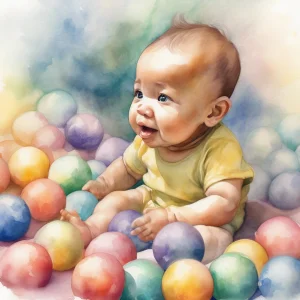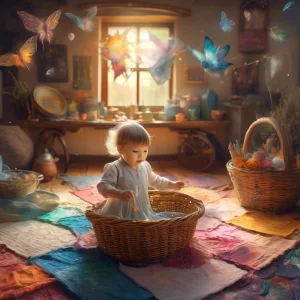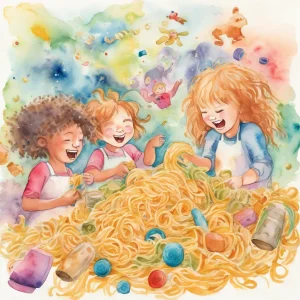Activity
Similar Activities
Enchanted Nature-Based Storytelling Adventure
Children’s Age: 0 month – 6 years
Activity Duration: 5 – 10 minutes
Let's have fun with Nature-Based Storytelling! Find a cozy outdoor spot, lay down a blanket, and bring a basket for collecting leaves and stones. Sit with your child, explore natur…
Activity Duration: 5 – 10 minutes
Holiday Sensory Bag Exploration – Festive Adventure
Children’s Age: 1–1.5 years
Activity Duration: 5 – 10 minutes
Introduce your 12 to 18-month-old to a Holiday Sensory Bag Exploration for sensory play and development. Prepare a bag with gel/oil, holiday items, and tape for a secure setup. Gui…
Activity Duration: 5 – 10 minutes
Sensory Ball Play: Texture Discovery for Infants
Children’s Age: 3 – 6 months
Activity Duration: 5 minutes
Explore sensory play with textured balls designed for infants aged 3 to 6 months to enhance their sensory, social-emotional, motor, and language skills. Set up a cozy space with so…
Activity Duration: 5 minutes
Enchanted Sensory Treasure Basket Exploration
Children’s Age: 6 months – 1.5 years
Activity Duration: 10 minutes
Explore the "Sensory Treasure Basket Exploration" activity designed to engage children's senses and support motor development in a fun way. Simply gather safe objects with various …
Activity Duration: 10 minutes
Nature's Touch: Sensory Nature Exploration for Babies
Children’s Age: 3 – 9 months
Activity Duration: 5 – 10 minutes
Engage your 3 to 9-month-old baby in a sensory nature exploration activity to support their development. Lay them on a soft blanket with safe natural objects and optional toys. Des…
Activity Duration: 5 – 10 minutes
Wonderful Beginnings: The Sensory Nature Walk
Children’s Age: 0 – 3 months
Activity Duration: 5 – 10 minutes
Experience a calming and stimulating Sensory Nature Walk designed for infants aged 0 to 3 months. Prepare with a soft carrier, cozy blanket, sunscreen, and a nature sounds playlist…
Activity Duration: 5 – 10 minutes
Ecosystem Adventure Board Game - Nature's Quest
Children’s Age: 7–9 years
Activity Duration: 10 – 25 minutes
An interactive board game where children explore and learn about ecosystems through challenges and tasks.
Activity Duration: 10 – 25 minutes
Musical Painting Fun: Expressive Art and Melodies
Children’s Age: 2–3 years
Activity Duration: 10 – 30 minutes
This activity involves children creating paintings while listening to music that matches the mood of sentences they choose. It helps with sensory development, and social-emotional …
Activity Duration: 10 – 30 minutes
Musical Kindness Quilt
Children’s Age: 8–10 years
Activity Duration: 10 – 20 minutes
The "Musical Kindness Quilt" activity engages 9-year-old children in learning about famous musicians while enhancing communication skills and cognitive development. Children choo…
Activity Duration: 10 – 20 minutes
Whispers of Nature Rhythms: Exploring Beats and Patterns
Children’s Age: 3–7 years
Activity Duration: 10 – 30 minutes
Let's explore "Nature Rhythms" together! We will listen to nature's beats and patterns using rocks, sticks, leaves, and pinecones. Find a safe outdoor spot, gather natural material…
Activity Duration: 10 – 30 minutes
Magical Sensory Adventures: Exploring Sensory Bins
Children’s Age: 1.5–2 years
Activity Duration: 10 minutes
Explore the "Exploring Sensory Bins" activity designed for children aged 18 to 24 months to boost play skills through tactile experiences. Gather materials like rice, toys, and sco…
Activity Duration: 10 minutes

























